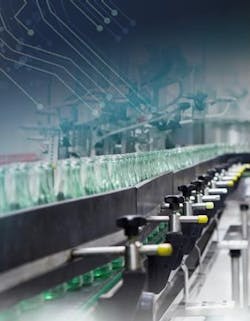Report: IoT to triple number of connected industrial controllers
According to ABI Research, the increasing adoption of the Internet of Things (IoT) within industrial settings will result in a substantial growth of the number of connected industrial devices, in particular industrial control devices like PLCs. The research firm estimates that over the period from 2014 to 2020, the number of connected industrial controllers will triple; growing at an average rate of 20%.
“Compared to the general-purpose conventional networks, industrial networks are characterized by a large variety of technologies and communication protocols, whose combination is determined by the requirements of the specific application they address,” comments Eugenio Pasqua, research analyst at ABI Research.
He adds, “As a consequence, there is typically little interoperability with conventional networks, but also between different industrial networks. Sharing data among different facilities or with the higher levels of an enterprise remains a very challenging task within this context.”
As noted by the new report, the technological advances of the past decade are, however, slowly changing this. ABI Research contends that the diffusion of Ethernet and IP-based industrial protocols, as well as the improved intelligence of industrial devices, have reduced the differences between conventional and industrial networks. This enables an easier interconnection between enterprise IT applications and OT systems, including the industrial equipment and the associated software, such as SCADA.
Firms like ABB, Siemens, Schneider Electric, and Rockwell Automation are among the major vendors helping industrial organizations in this technological shift, states the researcher.
“Through the adoption of IoT technologies, industrial organizations can make better use of the huge amount of data generated inside their facilities and extract more meaningful information," adds ABI's Pasqua. "This allows a better vision of what happens along the whole supply chain, achieving better performance at lower operating costs and the ability to react faster to changes or issues.”
Pasqua concludes, “The number of potential benefits as well as the increasing pressure from the market are pushing industrial organizations towards this direction, and in the near future we will see more and more industrial facilities opening up their ‘silos’ and sharing their data with the higher levels of the enterprise, connecting their operational and business domains.”
These findings are from ABI's "Industrial Network Technologies and Control Systems: The Opportunities and Challenges for IoT Services and Platforms" report, which is part of the firm's M2M and IoT Platforms and Services Market Research. Learn more.
